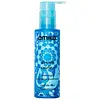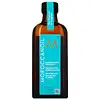What's inside
What's inside
 Key Ingredients
Key Ingredients

No key ingredients
 Benefits
Benefits

 Concerns
Concerns

 Ingredients Side-by-side
Ingredients Side-by-side

Water
Skin ConditioningBehentrimonium Methosulfate
Cetyl Alcohol
EmollientC13-15 Alkane
SolventHippophae Rhamnoides Fruit/Seed Oil
AntimicrobialHyaluronic Acid
HumectantPolyglutamic Acid
Skin ConditioningSpirulina Platensis Extract
Skin ProtectingCocos Nucifera Water
MaskingSelaginella Lepidophylla Extract
EmollientInonotus Obliquus Extract
Skin ConditioningRhodiola Rosea Extract
EmollientEleutherococcus Senticosus Root Extract
AstringentRhaponticum Carthamoides Root Extract
Skin ConditioningGlycerin
HumectantCaprylic/Capric Triglyceride
MaskingGuar Hydroxypropyltrimonium Chloride
Skin ConditioningSodium Phytate
Propanediol
SolventGlycereth-2 Cocoate
EmulsifyingEthylhexylglycerin
Skin ConditioningPotassium Sorbate
PreservativeButylene Glycol
HumectantBenzoic Acid
MaskingSodium Benzoate
MaskingPhenoxyethanol
PreservativeParfum
MaskingWater, Behentrimonium Methosulfate, Cetyl Alcohol, C13-15 Alkane, Hippophae Rhamnoides Fruit/Seed Oil, Hyaluronic Acid, Polyglutamic Acid, Spirulina Platensis Extract, Cocos Nucifera Water, Selaginella Lepidophylla Extract, Inonotus Obliquus Extract, Rhodiola Rosea Extract, Eleutherococcus Senticosus Root Extract, Rhaponticum Carthamoides Root Extract, Glycerin, Caprylic/Capric Triglyceride, Guar Hydroxypropyltrimonium Chloride, Sodium Phytate, Propanediol, Glycereth-2 Cocoate, Ethylhexylglycerin, Potassium Sorbate, Butylene Glycol, Benzoic Acid, Sodium Benzoate, Phenoxyethanol, Parfum
 Reviews
Reviews

Alternatives
Ingredients Explained
These ingredients are found in both products.
Ingredients higher up in an ingredient list are typically present in a larger amount.
Parfum is a catch-all term for an ingredient or more that is used to give a scent to products.
Also called "fragrance", this ingredient can be a blend of hundreds of chemicals or plant oils. This means every product with "fragrance" or "parfum" in the ingredients list is a different mixture.
For instance, Habanolide is a proprietary trade name for a specific aroma chemical. When used as a fragrance ingredient in cosmetics, most aroma chemicals fall under the broad labeling category of “FRAGRANCE” or “PARFUM” according to EU and US regulations.
The term 'parfum' or 'fragrance' is not regulated in many countries. In many cases, it is up to the brand to define this term.
For instance, many brands choose to label themselves as "fragrance-free" because they are not using synthetic fragrances. However, their products may still contain ingredients such as essential oils that are considered a fragrance by INCI standards.
One example is Calendula flower extract. Calendula is an essential oil that still imparts a scent or 'fragrance'.
Depending on the blend, the ingredients in the mixture can cause allergies and sensitivities on the skin. Some ingredients that are known EU allergens include linalool and citronellol.
Parfum can also be used to mask or cover an unpleasant scent.
The bottom line is: not all fragrances/parfum/ingredients are created equally. If you are worried about fragrances, we recommend taking a closer look at an ingredient. And of course, we always recommend speaking with a professional.
Learn more about Parfum